In December 2020 we are undertaking a 16-day field effort in the Maui Nui region, in collaboration with the Scripps Acoustic Ecology Laboratory and the Pacific Islands Fisheries Science Center. This is our ninth year of field work in the Maui Nui area since this research effort started there in 2000, and the fourth time we've been based off the island of Lānaʻi (check out the project page for our last Lānaʻi effort). The purpose of this field project is to study the foraging behavior of endangered false killer whales in relation to oceanography and prey. Researchers from Scripps deployed a long-term passive acoustic array to the west of Lāna‘i, in an area that is known to be a high-density region for one of the five social clusters in the insular false killer whale population. This acoustic array is capable of tracking vocalizing false killer whales and other species as well as boats that are in the area. Also on the array are a fisheries echosounder and several autonomous conductivity-temperature-depth sensors to characterize water properties in the area. Our boat-based field efforts are concentrating on satellite tagging and photo-ID, to be able to examine movements of tagged animals in the vicinity of the acoustic array over multiple months. We also have a land-based team on the island of Lāna‘i, using high-power optics to monitor species and boat presence in the vicinity of the array. This will increase our encounter rates during the boat-based effort, and provide information on the variety of species which are using the area.
In addition to our work with false killer whales, we are also obtaining photos of other species encountered for comparison to our photo-ID catalogs (particularly of bottlenose dolphins, short-finned pilot whales, and hopefully some of the less-common species like rough-toothed dolphins or pygmy killer whales), collecting biopsy samples (for studies of genetics and hormone chemistry), and using a drone to examine body condition in a number of species. We also take fluke photos of any humpback whales we see, and contribute them to Happywhale.
A few words about COVID-19 precautions. Normally on our field projects we take out a number of volunteers for one or several days each, but on this project we are sticking with a reduced team and minimizing turnover of personnel. We all take the risk very seriously, and everyone on the team was tested both prior to travel to Lāna‘i and multiple times (every five or six days) while on island, as well as wearing tracking bracelets for contact tracing. We are all abiding by CDC and State of Hawai‘i guidelines, to protect both members of the team and the Lāna‘i community.
The field team is made up of Colin Cornforth, Brittany Guenther, Andrea Gutierrez, Jordan Lerma, Brijonnay Madrigal, Michelle Nason, Kimberly Wood, and Robin Baird. This project is funded by a grant from the NOAA Bycatch Reduction Engineering Program, and we thank Pulama Lānaʻi and Captain Zodiac for their help in facilitating this research!
End of project update
December 16th was our last day on the water for the project, and it turned out to be a very good one! We re-located our tagged individual from Cluster 4 of the endangered main Hawaiian Islands population, were able to deploy two more tags on individuals in the group, took identification photos from about a dozen individuals, and collected two more biopsy samples, both from individuals that had not been previously sampled. Over the 16 days we covered over 2,000 km of survey effort in the Maui Nui area, had 59 encounters (with six species) and have ID photos from all six, collected drone images of dozens of individuals from four species (to assess body condition), collected 27 biopsy samples (from five of the six species), and have tag data coming in from five different individuals (four false killer whales, three from Cluster 4 and one from Cluster 2, and one bottlenose dolphin). Overall an incredibly successful project!
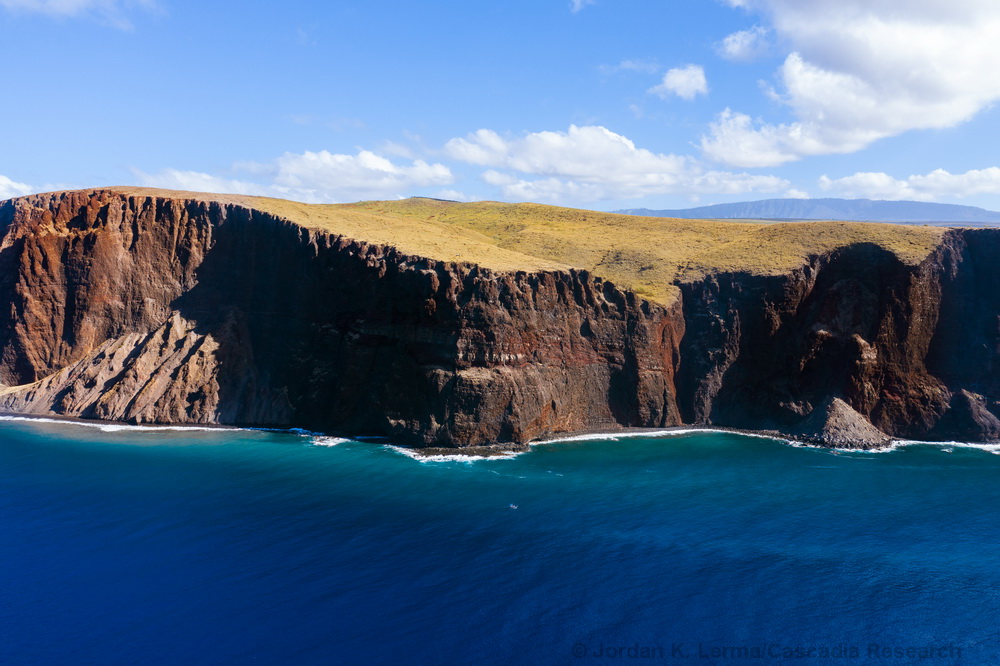
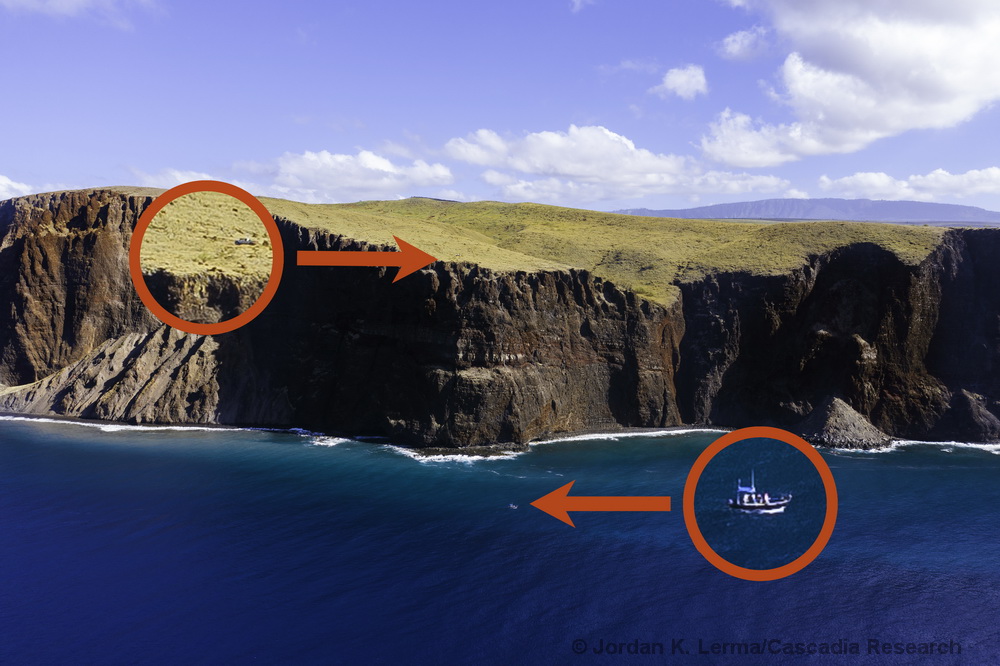
The Pali Kaholo on the southwest corner of Lānaʻi is an amazing location for watching for whales and dolphins! These photos show the site, with the lower image showing both the location of the land-based crew and the boat as it passed by below the cliffs!
While we were hoping to see a fin whale (which we saw off Lānaʻi in December 2012), or sei whales (which we saw here in March 2018), the only baleen whales we saw this trip were humpback whales. While humpbacks are not one of our primary study species, when we get the opportunity we take identification photos and submit them to HappyWhale.
December 11th update
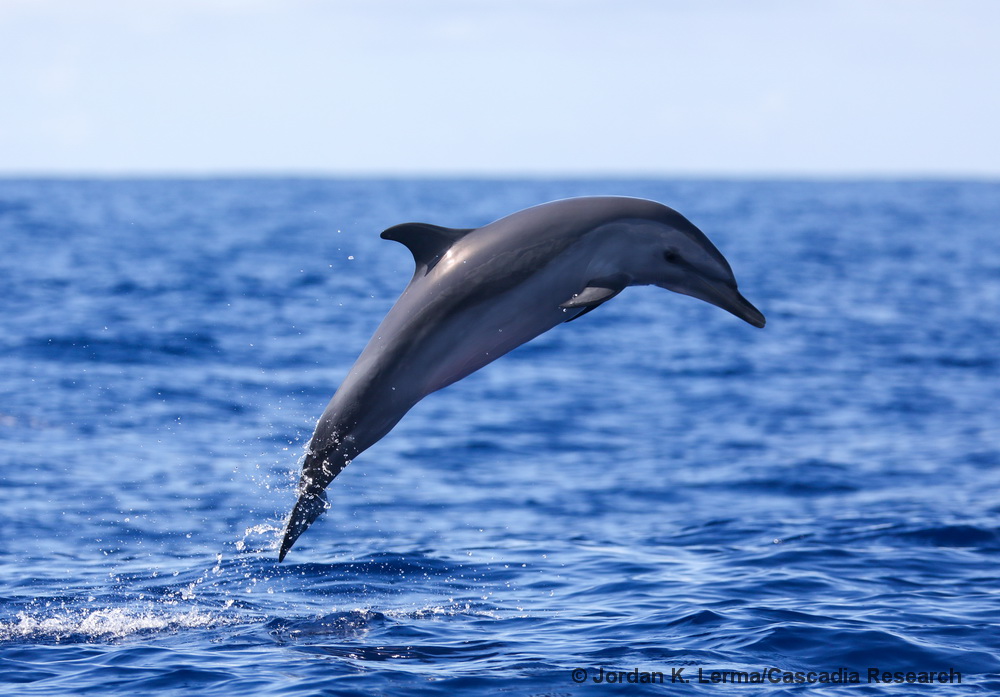
Over the last few days we've had encounters with pantropical spotted dolphins (such as the one leaping above and the two below), as well as short-finned pilot whales and bottlenose dolphins, have been able to obtain lots of photos for our photo-ID catalogs, as well as drone images for all three species to examine body condition.
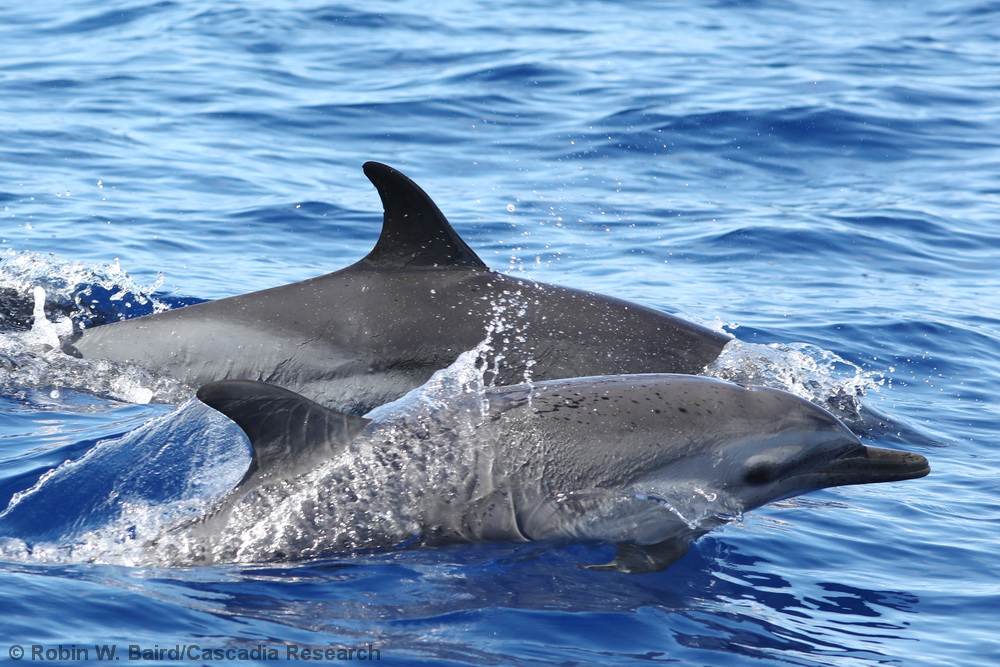
We are also using a set of green dot lasers attached to one of our camera systems to measure the dorsal fins of individuals (termed laser photogrammetry), and you can see the two green dots (15 cm apart) on the dorsal fin of a bottlenose dolphin.
We also record bird sightings when we are out an take photos of any rare or unusual species - on December 9th we photographed a Blue-gray Noddy (Manuohina in Hawaiian), only our second sighting of this species in our work, and likely the first record of this species off Maui Nui! Check out our seabird page for more information on seabirds in Hawaiian waters.
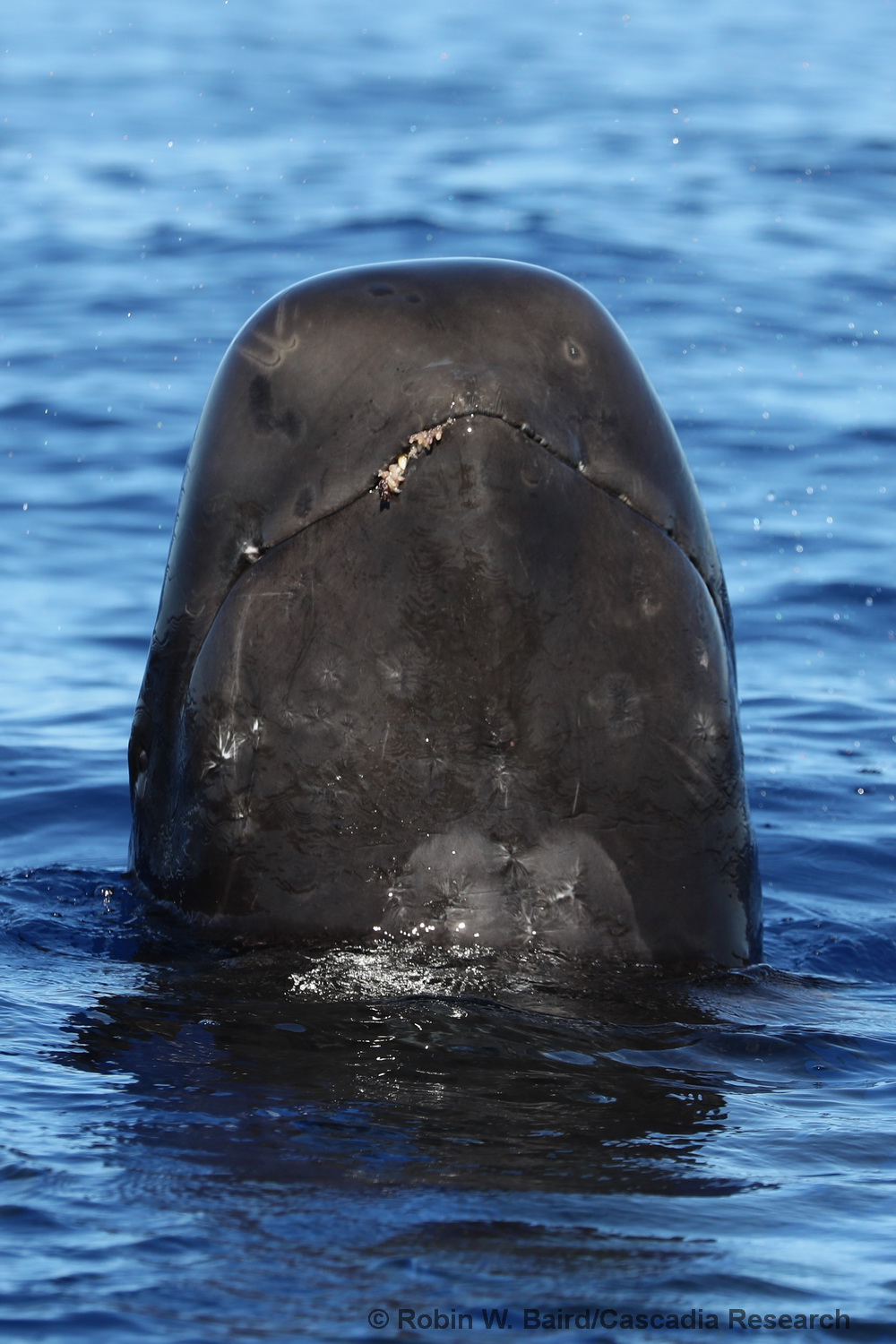
A short-finned pilot whale spyhopping next to the boat. The light-colored material along the mouthline are likely a type of barnacle, that anchors on the teeth when there is an injury along the mouth that exposes the teeth.
December 7th update
We've had great success over the last few days, with encounters with false killer whales, short-finned pilot whales, bottlenose dolphins, pantropical spotted dolphins and spinner dolphins. On December 7th we found a false killer whale from Cluster 2 of the endangered main Hawaiian Islands population, a group that spends most of its time off Hawai'i Island. We were able to deploy a LIMPET satellite tag (see photo above) and are excited to see where this whale goes.
The map above shows our tracklines from the first week, including effort making it up onto Penguin Bank (west of Moloka'i), to the southwest of Kaho'olawe, and to the area off east Maui.
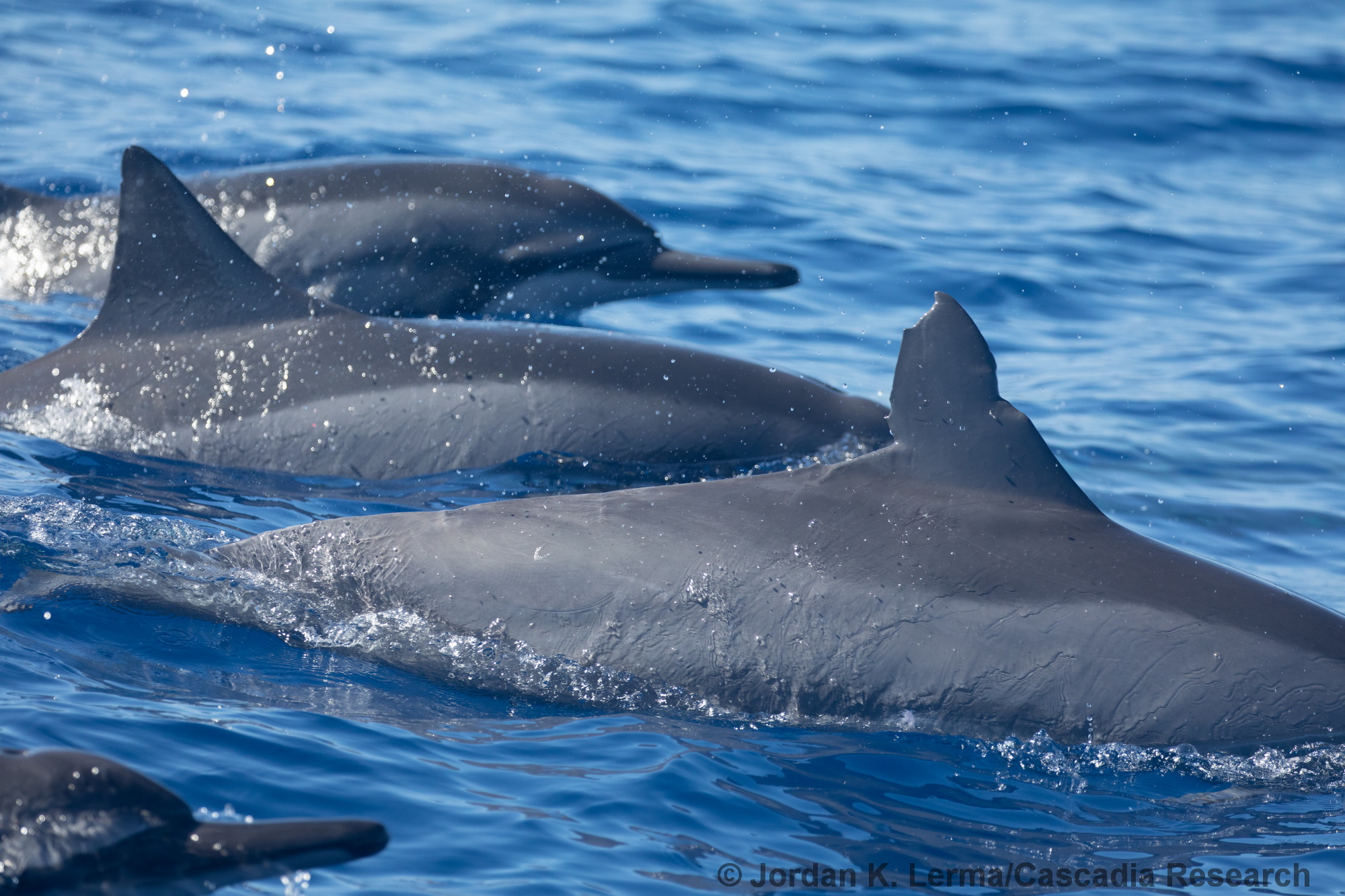
We were excited to make it onto Penguin Bank on December 6th, an area we rarely get to survey. As well as a fair number of humpbacks (14 individuals), we encountered both bottlenose dolphins and spinner dolphins. This area is thought to be an area of overlap between O'ahu and Maui Nui populations of both species, so we are excited to see if these images match to our catalogs.
On December 5th we encountered our second group of false killer whales, and were able to get good IDs of about 10 individuals as well as two biopsy samples for genetics and hormone chemistry, and also witnessed several more predation events on mahi mahi.
December 3rd update
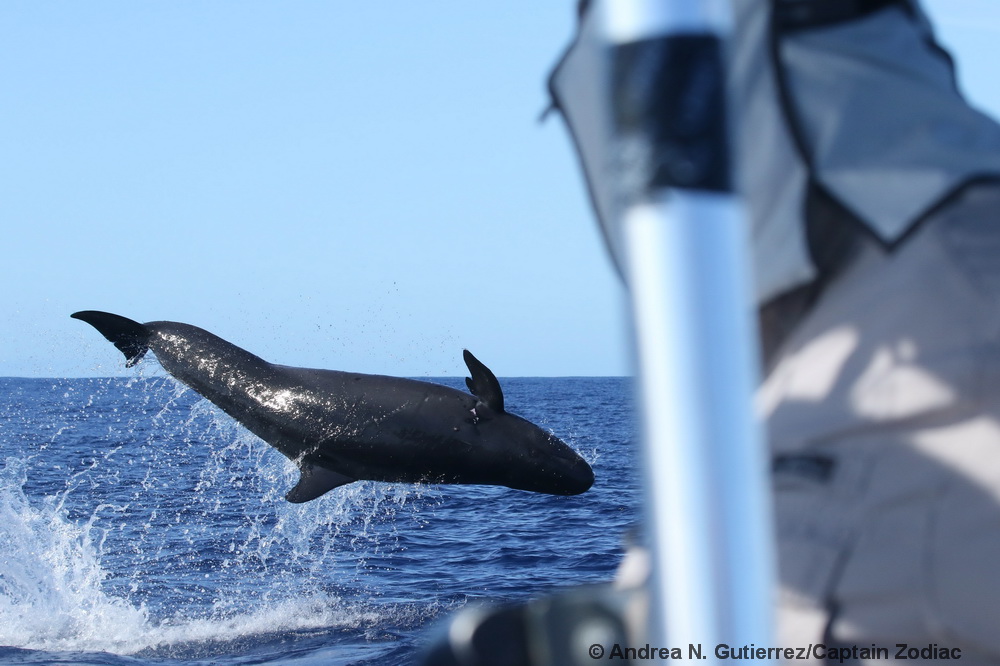
Today we encountered our highest-priority species for the trip, false killer whales! We were able to get about a dozen photo-IDs, collected two biopsy samples (for genetics and hormone chemistry), and deployed one satellite tag to track movements of the group. We also witnessed seven predation events, all on mahi mahi. The leap above (and those below) are typical when false killer whales are hunting mahi mahi, as the whales rapidly accelerate and try to either ram the fish or hit it with their tail.
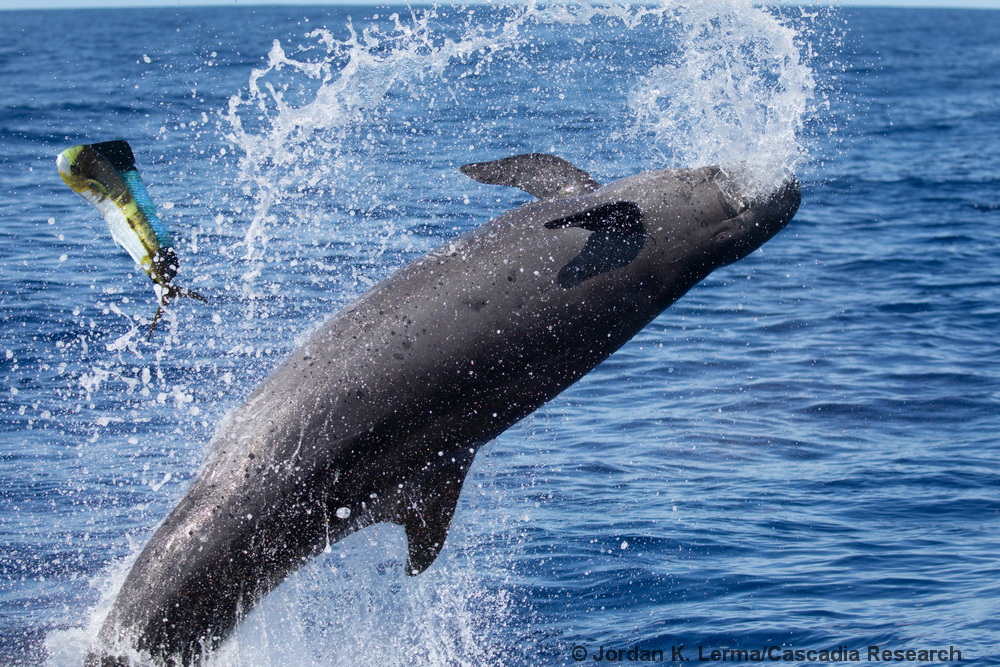
The darker spots on the belly of this false killer whale are all healed scars from cookie-cutter shark bites.
December 2nd update
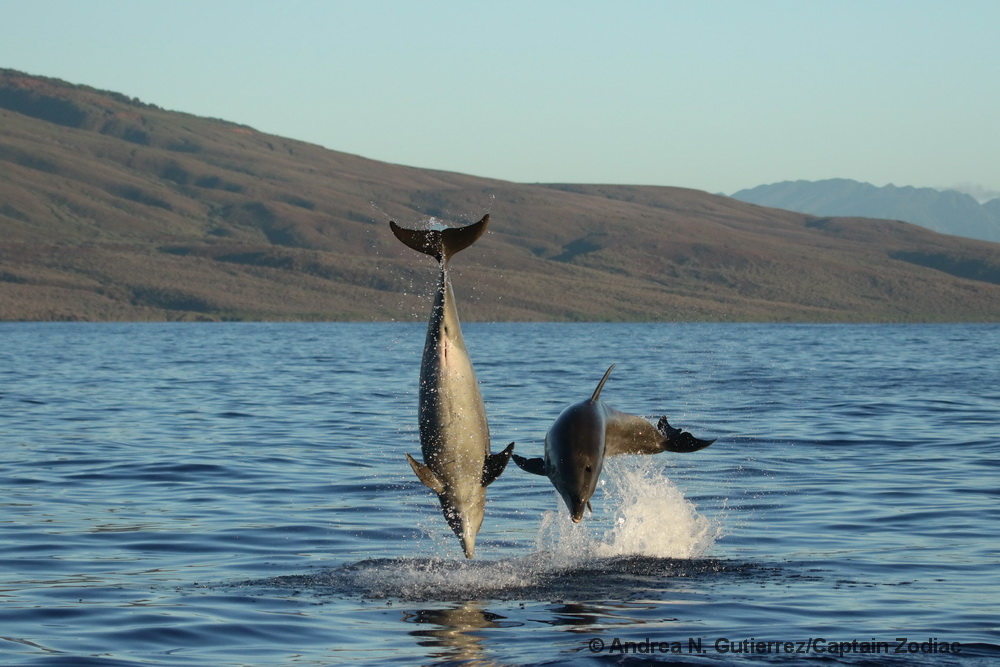
A good day on the water today with encounters with bottlenose dolphins, pantropical spotted dolphins and short-finned pilot whales. The two bottlenose dolphins shown above were in a very social group, south of Lānaʻi (seen in the background). Later in the day we encountered another group of bottlenose dolphins in deeper waters to the west of Lānaʻi and were able to deploy a satellite tag on one individual to track their movements.
Short-finned pilot whales west of the Pali Kaholo, Lānaʻi
December 1st update
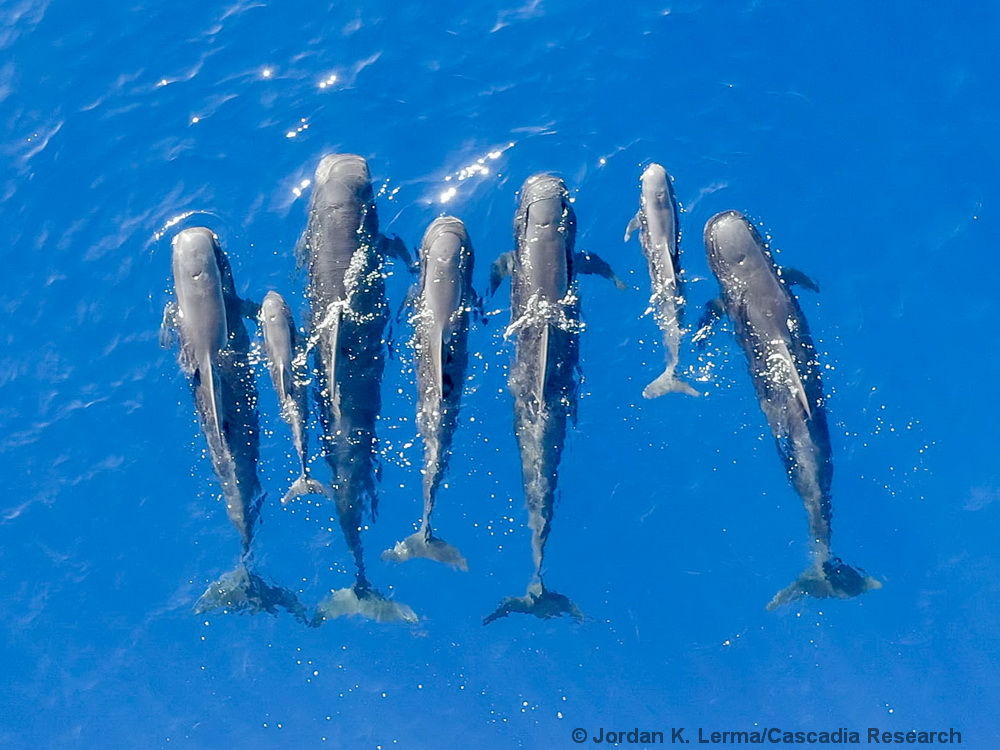
Somewhat amazingly, given we are in the middle of a pandemic, the boat (coming from Kona) and everyone made it to the island safely on November 30th, and December 1st was our first day, both on the water and at the Pali Kaholo site. Overall it was a great first day, localizing the acoustic array for the boat and the land-based teams, and sightings (from the boat) of short-finned pilot whales (see above) as well as pantropical spotted dolphins. We were able to get some drone images of both species for photogrammetry and body condition studies, as well as lots of IDs of pilot whales for our photo-ID catalog.The land-based team sighted a group that was likely false killer whales, although they were moving fast and the boat was not able to catch up! A very promising start to the study!
Pantropical spotted dolphins were sighted both from land and from the boat - based on studies of genetics there is a resident population of pantropical spotted dolphins in the Maui Nui area.
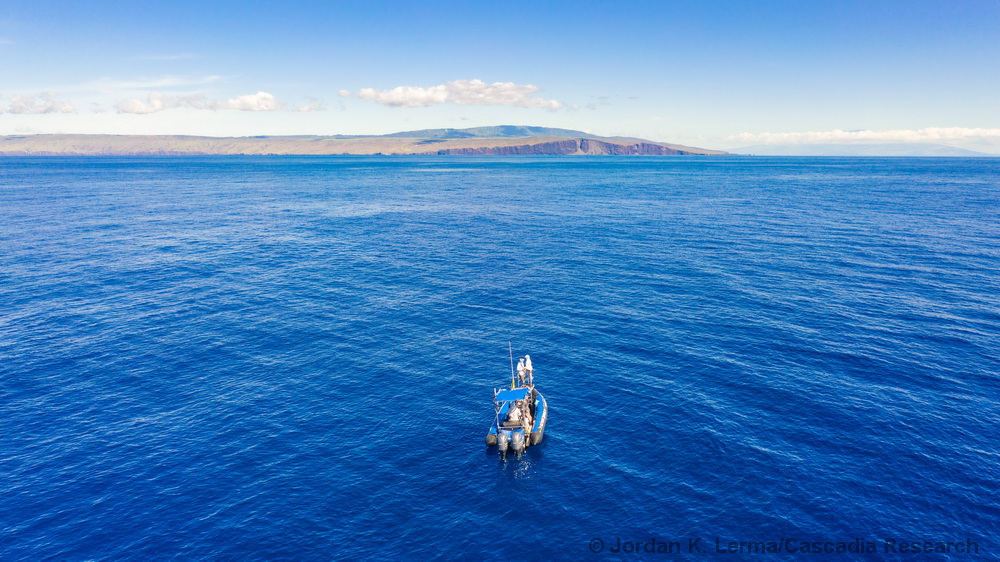
A view of the research vessel to the west of the Pali Kaholo observation site.
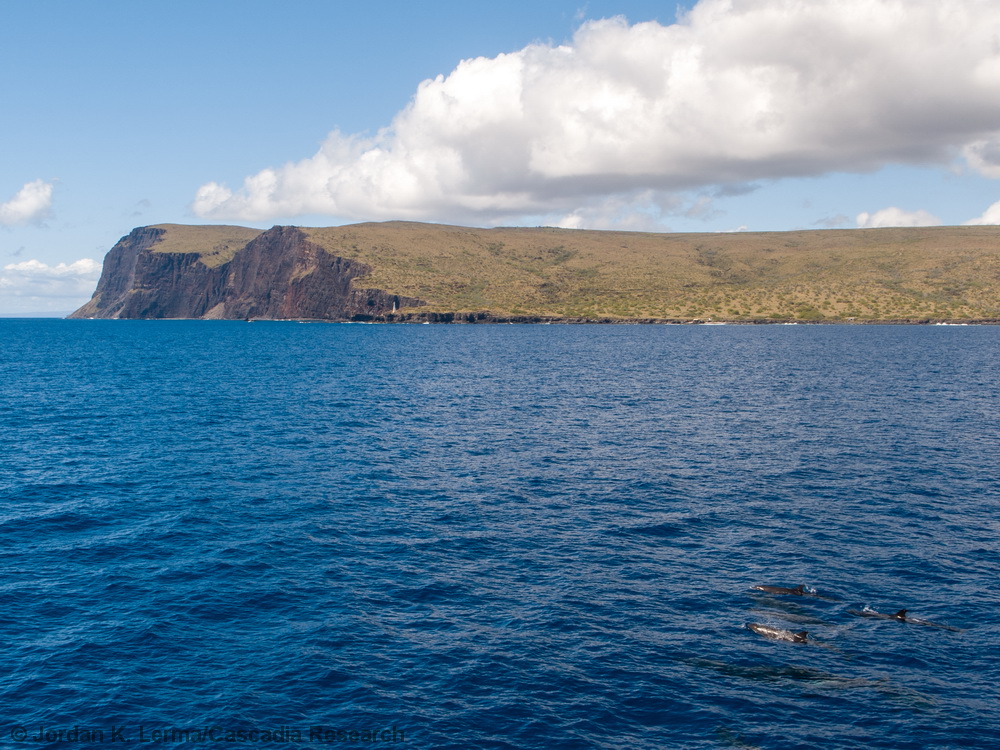
The land-based observation station is at the top of Pali Kaholo on the southwest corner of Lānaʻi, shown above.
Check out this page for updates from previous field efforts.
For copies of publications and reports on our research check out our Hawaiʻi publications page
Any questions should be directed to Robin Baird, reachable at rwbaird (at) cascadiaresearch (dot) org
Photos are taken under NMFS Scientific Research Permit No. 20605.
News Coverage of our December 2020 Maui Nui Field Project:
USA Today's For the Win: Mahi-mahi has No Chance as False Killer Whale Launches Attack (December 7, 2020)
Newsweek: 'Spectacular' Photos Shows False Killer Whale Devouring Fish Mid-Air (December 9, 2020)
ABC4 Utah: Rare sight: Endangered False Killer Whale photographed catching and eating fish (December 9, 2020)